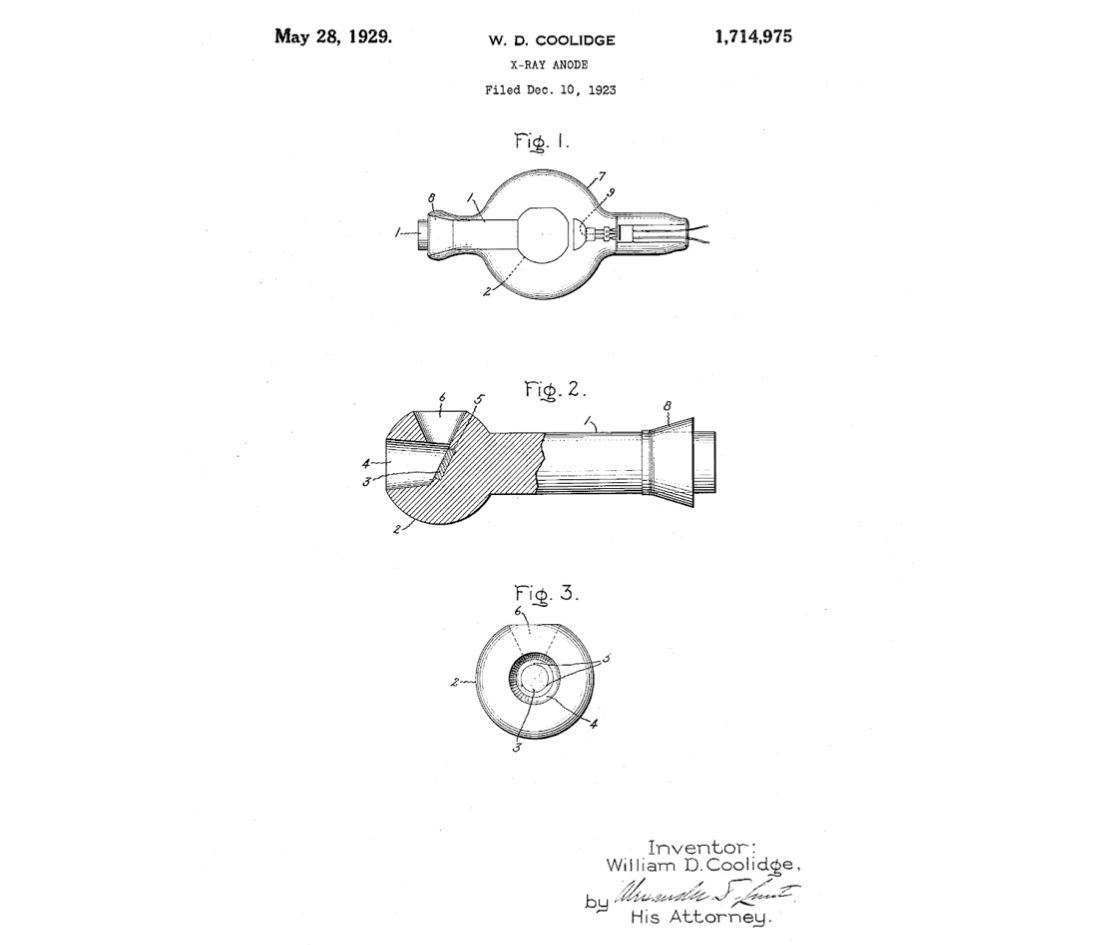William Coolidge
William David Coolidge was an engineer and physicist, known for inventions that led to the development of incandescent light bulbs and X-ray machines.
Coolidge was born on October 23, 1873 in Hudson, Massachusetts. He received a bachelor's degree in electrical engineering from MIT in 1896 and a doctorate from the University of Leipzig in Germany in 1899. Following these academic milestones, Coolidge joined General Electric's (GE) Research Laboratory in 1905. The crowning achievement of his early work, conducted with his lifelong colleague Colin G. Fink, was the production of ductile tungsten in 1910. This material was able to replace carbon as the preferred filament of incandescent light bulbs, and is still used today.
Coolidge's inventions covered a broad range -- he worked on magnetized steel, radar systems, and comfort devices like the electric blanket. In total, he was awarded 83 patents. Coolidge has been immortalized for his invention of a vacuum tube for generating X-rays (often still called the "Coolidge tube"). This patent granted in 1913, made the use of X-rays for medical diagnosis safe and convenient. X-rays are a form of energy that travel in waves much smaller than those of visible light. Coolidge's machine allowed these waves easily to be produced by the impact of high-energy electrons on a tungsten anode within a vacuum tube, and then to be directed through a substance onto a photographic plate. Denser materials within the substance being scanned absorb more X-rays, and thus produce a brighter photographic image on the plate. Coolidge even invented a portable model for use during World War I. Despite subsequent advances, Coolidge's basic design has never been replaced.

Coolidge became director of the GE Research Laboratory in 1932. In 1940 he was appointed vice president and director of research for GE. He remained a consultant and director emeritus in spite of retiring in 1944. He was also a member of the Visiting Committee of the National Bureau of Standards and a member of the National Inventors Council, an organization started in 1940 to investigate inventions that might prove useful during World War II.
Coolidge belonged to many groups such as the National Academy of Sciences, the American Academy of Arts and Sciences, and the American Chemical Society. Moreover, he won countless awards such as the Rumford Prize, the American Institute of Electrical Engineers Edison Medal, and the Faraday Medal. In 1975 he was inducted into the Inventors Hall of Fame. During the same year, on February 3rd, Coolidge died in Schenectady, New York at the age of 101.


